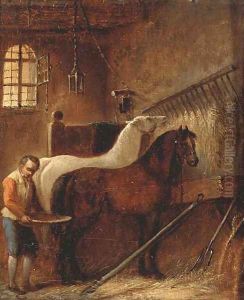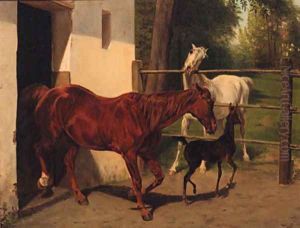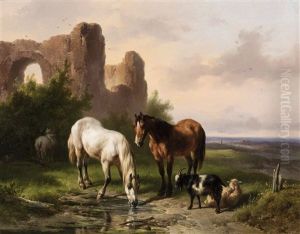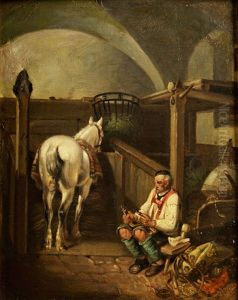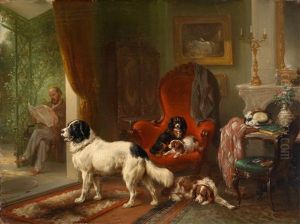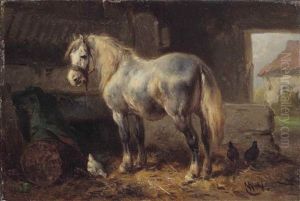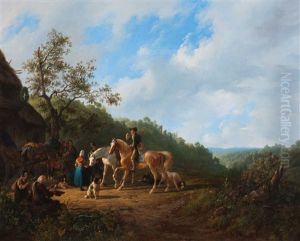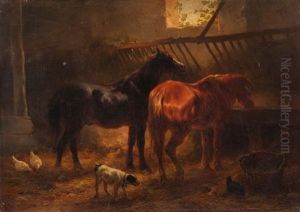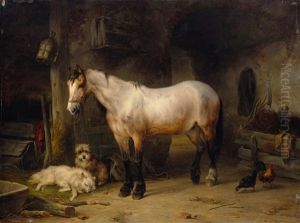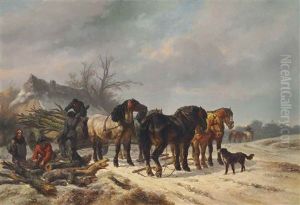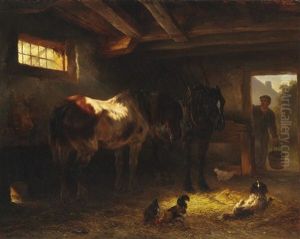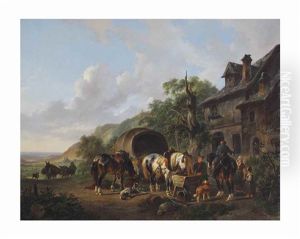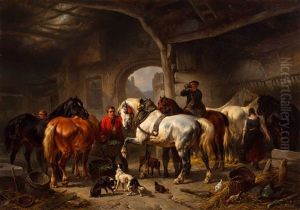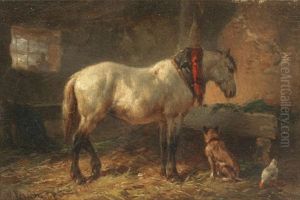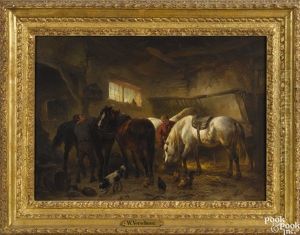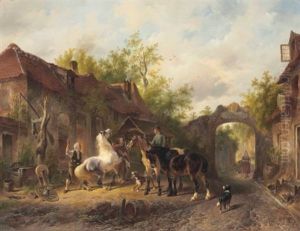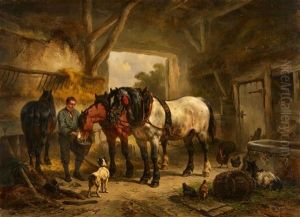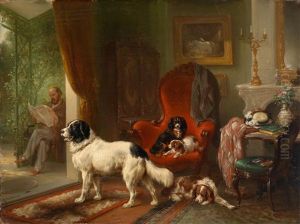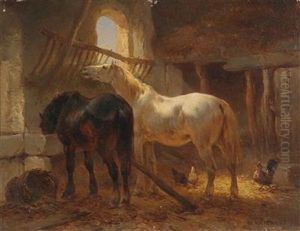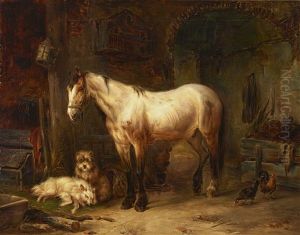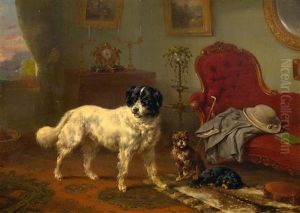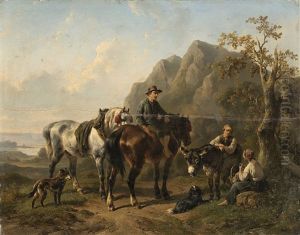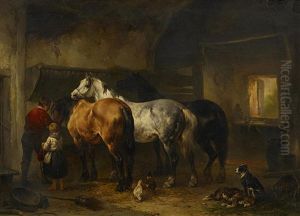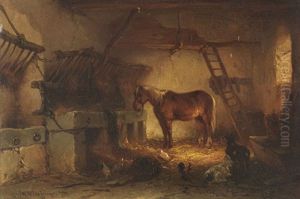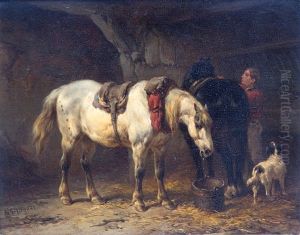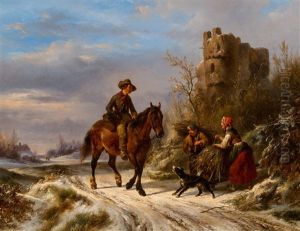Wouter Verschuur Paintings
Wouter Verschuur was a 19th-century Dutch painter renowned for his mastery in depicting horses within landscapes and stable scenes, a subject matter that garnered him considerable acclaim during his lifetime. Born on June 11, 1812, in Amsterdam, Netherlands, Verschuur showed an early predilection for art, especially in drawing and painting animals, which would later define his career. His talent was nurtured under the tutelage of Pieter Gerardus van Os, a painter famous for his animal and landscape works, which significantly influenced Verschuur's development as an artist. Furthermore, his skills were honed under the guidance of Cornelis Steffelaar, further embedding the young artist in the traditions of Dutch animal painting.
Verschuur's work is characterized by its dynamic representation of horses, often captured in vibrant, natural settings that showcase not only the animals' beauty and grace but also their strength and vitality. His ability to depict the nuanced interplay of light and shadow, combined with a meticulous attention to detail, brought his scenes to life, making them highly sought after by collectors and art enthusiasts of his day. Throughout his career, Verschuur exhibited extensively, including at the prestigious Amsterdam Royal Academy, where he was highly regarded among his peers and critics alike.
The artist's contribution to Dutch painting extends beyond his exquisite animal portraits. Verschuur was part of the Romantic movement that swept through European art in the 19th century, and his works exhibit the Romantic era's characteristic emphasis on emotion and the sublime beauty of nature. Despite the specificity of his subject matter, Verschuur's paintings resonate with a broader audience due to their universal themes of harmony and the enduring human fascination with the natural world.
Wouter Verschuur's legacy is preserved in the collections of many major museums in the Netherlands and internationally, including the Rijksmuseum in Amsterdam. His influence continued posthumously, inspiring subsequent generations of animal painters. He passed away on July 4, 1874, in Vorden, leaving behind a body of work that remains celebrated for its technical skill, emotive power, and the artist's profound affection for the equine subject.
